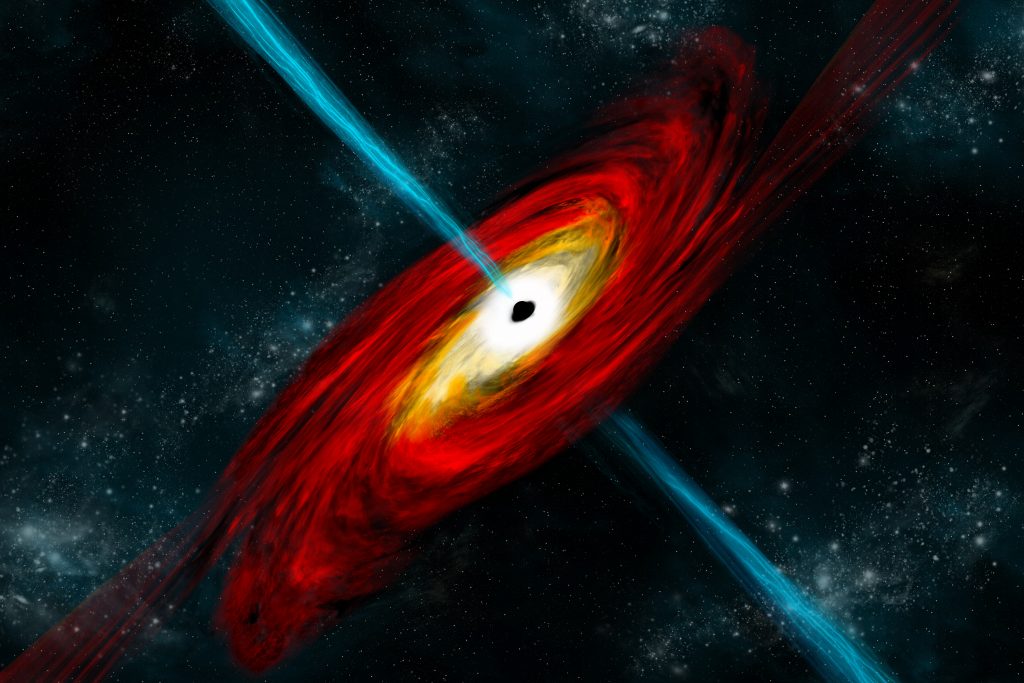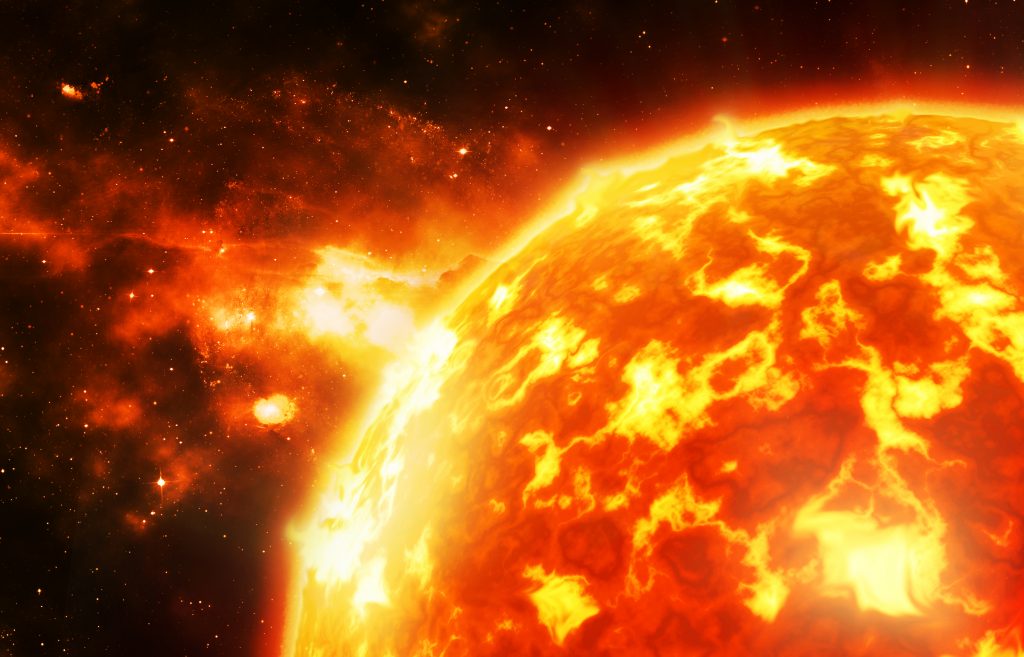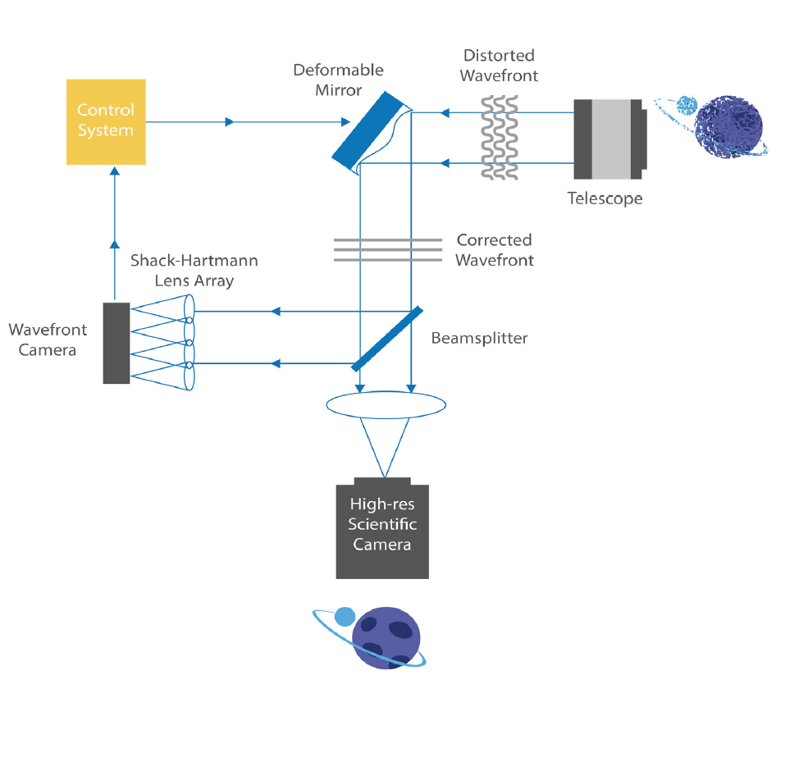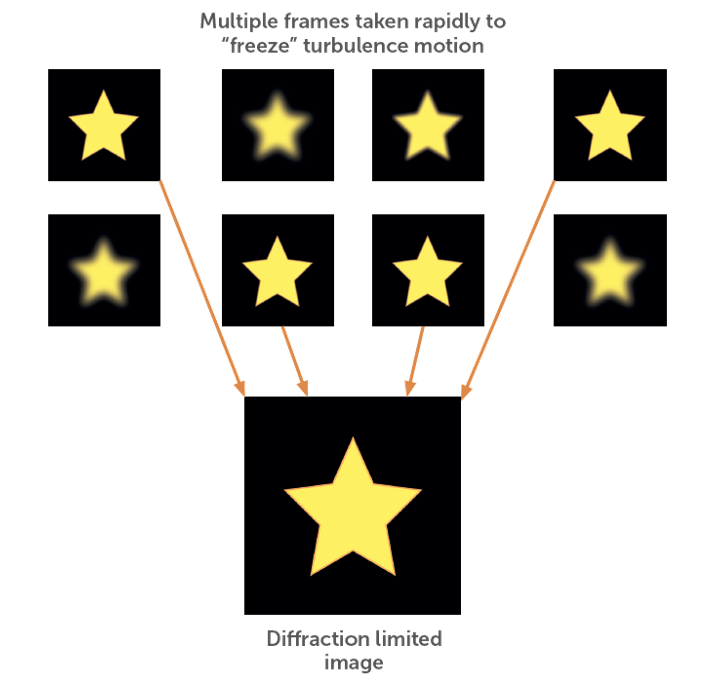Applications
Exoplanets

Exoplanet characterization and discovery is at the forefront of astronomy, with various techniques, such as transit photometry and radial velocity, being used for identification and validation.
These techniques require a camera with high precision, low noise, high dynamic range and high duty cycle to detect any slight variations in the luminosity of the exoplanet’s associated star. With deep cooling and a read noise of 0.7 e-, three times lower than our world-leading CCD sensors, the COSMOS is able to measure these small variations.
With greater than 90% peak quantum efficiency, the back-illuminated COSMOS has high sensitivity over the visible range, alongside high dynamic range allowing for both bright and faint objects to be imaged within the same frame, without risk of saturating pixels while still detecting weaker signal. As the COSMOS utilizes advanced CMOS technology, it has 100% duty cycle essential for dense, high cadence measurements.
Orbital Object Tracking
Orbital object tracking involves the monitoring and characterization of objects within Earth’s orbit, such as asteroids, space debris, or satellites.
These measurements typically require high frame rates with low noise and high sensitivity over a large field of view. The COSMOS has a low read noise of 0.7 e-, allowing for fast frame rates essential for the detection of dynamic objects. COSMOS also has high sensitivity within the visible, with a peak quantum efficiency of >90%, allowing for the fainter signals, typical of shorter exposure times, to be detected.
Lower orbit objects typically move rapidly across the horizon, requiring a large field of view to capture the object’s position and trajectory most accurately. The large sensor sizes of the COSMOS allow low orbital objects to be captured over a longer period of time, resulting in minimal movement of the telescope tracking system.

Time Domain Astronomy

Time domain astronomy is the study of how unique, one-off events change and vary over time in space. It is an area of research that utilizes a range of techniques to acquire the most information about each individual event. As these events are unknown, each technique typically uses shorter exposure times and rapid imaging to prevent saturation of the detector.
With both a peak quantum efficiency greater than 90% in the visible, and a read noise of 0.7 e-, the COSMOS camera is able to detect faint signals common with shorter exposure times. The COSMOS also has fast frame rates with continuous imaging, allowing for rapid capture of a dynamic event.
The high dynamic range of the COSMOS ensures that both bright and faint signals can be captured within the same frame, without the fear of saturating the pixels with brighter signals, while still detecting weaker signals. The COSMOS also has large sensor sizes, with up to 115 mm diagonal, allowing for multiple references stars to be captured within each frame, improving object or event calibration.
Solar Physics
The Sun is continually changing, with highly dynamic outer layers. Studying these dynamic events can provide valuable insight into the processes and formation of stars at similar stages to the Sun.
With high spatial and temporal resolution, the COSMOS allows for accurate investigation into the dynamic events of the outer surfaces and the solar atmosphere. The large pixel size and large pixel array of the COSMOS provides the most comprehensive field of view, allowing capture of the entire area of an event, such as a solar flare, to be images within one frame.

Atmospheric Correcting Techniques
Adaptive Optics

Adaptive optics is a technique that provides higher resolution images by counteracting the effects of atmospheric turbulence. In order to do so, the adaptive optics system utilize a camera with both fast frame rates, to keep up with the changing atmosphere, and low read noise, to ensure correction is atmosphere only, to feed back into the telescope system to make atmospheric adjustments.
The COSMOS has a low read noise of 0.7 e-, ensuring that any corrections are from the changes in atmosphere, and allowing for the wavefront capture of fainter stars that are closer to the scientific object of interest. The COSMOS also provides fast frame rates without sacrificing sensitivity, as common with EMCCD camera detection of greater than a few photons. These frame rates combined with short frame times of the COSMOS allow for rapid system adjustments in the most turbulent of atmospheres.
Speckle/Lucky Imaging
Speckle and lucky imaging are two alternative methods which rely on rapid image acquisition to “freeze” the turbulent motion of the atmosphere, and through post processing, improves image resolution. These techniques require a camera with low noise, fast read out and high sensitivity to counteract the effects of turbulence while still detecting the object of interest at short exposure times.
The COSMOS is able to combine both object detection at short exposure time with fast frame rates, due to a low read noise of 0.7 e- and a high peak quantum efficiency of >90%. This allows for the rapid image capture essential for delivering diffraction-limited imaging. The COSMOS also has large format sensors, allowing for the detection of multiple objects within a frame, further increasing efficiency of both techniques.

